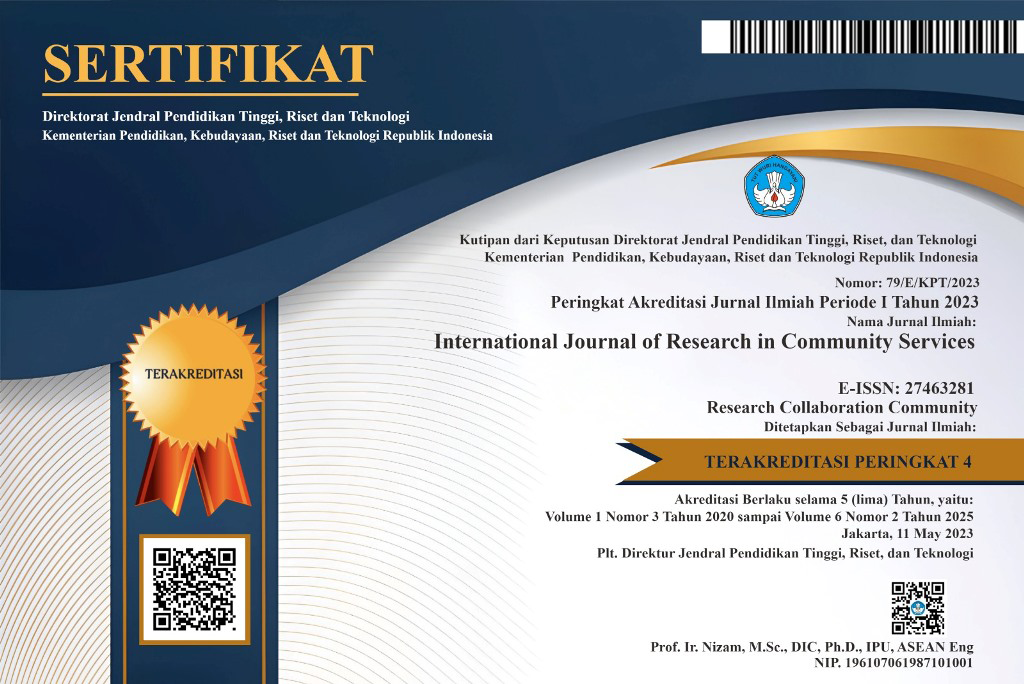Preliminary Study of Common House Gecko (Cosymbotus platyurus) Density in Java Island
Abstract
Common house gecko (Cosymbotus platyurus) is the most abundant house gecko species in Indonesia. The geckos live in home yard, garden, and in homes. It is part of food chain in its habitat, as its preys include cockroaches, flies, and termites. Previous studies found that this gecko are not found in mountainous area in West Java. In this study, the researchers observe population density of common house geckos in various types of habitats (houses and parks) with their home territory. The methods used were direct survey methods followed by literature study. The study is conducted in Java island (Jakarta, Tangerang, Bandung, Bogor, Sleman). Preliminary result of this study is house geckos are very active at night, because of the effect of light produced by lights that attract the attention of insects, gecko food.
Full Text:
PDFReferences
Bansal, R., & Karanth, K. P. (2010). Molecular phylogeny of Hemidactylus geckos (Squamata: Gekkonidae) of the Indian subcontinent reveals a unique Indian radiation and an Indian origin of Asian house geckos. Molecular Phylogenetics and Evolution, 57(1), 459-465.
Barton, D. P. (2007). Pentastomid parasites of the introduced Asian house gecko, Hemidactylus frenatus (Gekkonidae), in Australia. Comparative parasitology, 74(2), 254-259.
Callaway, Z., Thomas, A., Melrose, W., Buttner, P., & Speare, R. (2011). Salmonella Virchow and Salmonella Weltevreden in a random survey of the Asian house gecko, Hemidactylus frenatus, in houses in northern Australia. Vector-Borne and Zoonotic Diseases, 11(6), 621-625.
Carranza, S., & Arnold, E. N. (2006). Systematics, biogeography, and evolution of Hemidactylus geckos (Reptilia: Gekkonidae) elucidated using mitochondrial DNA sequences. Molecular phylogenetics and evolution, 38(2), 531-545.
Goldberg, S. R., & Kraus, F. (2016). Reproduction in the common house gecko, Hemidactylus frenatus (Squamata: Gekkonidae) from Hawaii. The Herpetological Bulletin, 136, 10-12.
Hoskin, C. J. (2011). The invasion and potential impact of the Asian House Gecko (Hemidactylus frenatus) in Australia. Austral Ecology, 36(3), 240-251.
Leo, S., Suherman, M., Permatasari, A., Suganda, D., & Zulamri, W. N. (2020). Herpetofauna diversity in Zamrud National Park, Indonesia: baseline checklist for a Sumatra peat swamp forest ecosystem. Amphibian & Reptile Conservation, 14(2), 250-263.
Matsuo, K., & Oku, Y. (2002). Endoparasites of three species of house geckoes in Lampung, Indonesia. Journal of Helminthology, 76(1), 53-57.
McKay, J. L., & Phillips, B. L. (2012). Climatic determinants of the reproductive timing in the Asian house gecko, Hemidactylus frenatus Duméril and Bibron (Gekkonidae). Raffles Bulletin of Zoology, 60, 583-588.
Novianti, T., Juniantito, V., Jusuf, A. A., Arida, E. A., Jusman, S. W. A., & Sadikin, M. (2019). Expression and role of HIF-1α and HIF-2α in tissue regeneration: a study of hypoxia in house gecko tail regeneration. Organogenesis, 15(3), 69-84.
Rakhmiyati, R., & Jaâ, M. (2018). Alizarin Red S-Alcian Blue Staining for Regenerated tail of Common House Gecko (Hemidactylus frenatus). Biology, Medicine, & Natural Product Chemistry, 7(2), 57-59.
Rakhmiyati, R., & Luthfi, M. J. (2016). Histological study of common house Gecko (Hemidactylus frenatus) regenerated tail. Biology, Medicine, & Natural Product Chemistry, 5(2), 49-53.
Reyes, N., & Carmona-Galindo, V. (2014). Proposal of predator-mediated control of the Chagas vector, Triatoma infestans, with the common house gecko. Bulletin of the Southern California Academy of Sciences, 113(2), 131-132.
Smith, K. F., Yabsley, M. J., Sanchez, S., Casey, C. L., Behrens, M. D., & Hernandez, S. M. (2012). Salmonella isolates from wild-caught Tokay geckos (Gekko gecko) imported to the US from Indonesia. Vector-Borne and Zoonotic Diseases, 12(7), 575-582.
Tkaczenko, G. K., Fischer, A. C., & Weterings, R. (2014). Prey preference of the Common House Geckos Hemidactylus frenatus and Hemidactylus platyurus. Herpetol Notes, 7, 483-488.
Vanderduys, E. P., & Kutt, A. S. (2013). Is the Asian house gecko, Hemidactylus frenatus, really a threat to Australia’s biodiversity?. Australian Journal of Zoology, 60(6), 361-367.
DOI: https://doi.org/10.46336/ijrcs.v2i4.226
Refbacks
- There are currently no refbacks.
Copyright (c) 2021 International Journal of Research in Community Services

This work is licensed under a Creative Commons Attribution 4.0 International License.
Published By:
IJRCS: Jalan Riung Ampuh No. 3, Riung Bandung, Kota Bandung 40295, Jawa Barat, Indonesia
Indexed By:

This work is licensed under a Creative Commons Attribution 4.0 International License.
View My Stats








